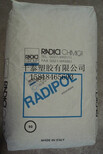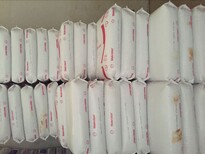PPO基础创新塑料(日本)PX-1005X芜湖
- 面议
- 2018-10-21 10:42:25
- PPO 基础创新塑料(日
- 周生 15818465693
- 广东省东莞市樟木头塑胶中心城三期
信息介绍
详细参数
PPO 基础创新塑料(日本) PX-1005X芜湖 、▲‘PP 6431 、、ASA PAS100、、▲‘POM RM2309、、▲‘POM SW-01、、▲‘TPE 5050D-1/8049、、▲‘PP P30N11、、▲‘PP 7433、、▲‘TPU 3090AF、、LCP 9X08403C、、▲‘TPE 4767、、▲‘TPE Z1060、、PP AR564、、▲‘TPU 35A、、▲‘ABS SERG1 BK 、▲‘ V4110F、、▲‘PPS FG-2 、、▲‘PBT WFL34、、▲‘PBT 711SA BK、▲‘ UE629、、▲‘TPE HTK9419-SIOO、、▲‘PC EGN2020DR、、▲‘POM S731、、TPV 121-58W175、、▲‘PA6 SX218L2V60、、PC/、▲‘ABS FR3002、、▲‘PC EXL1414 GY3D330L、、▲‘PA66 S3KC、、▲‘TPE A1800、、▲‘PA66 645、、▲‘PP R3400、、▲‘PC 121R-701、、▲‘PP LH72S、、▲‘PP 3825、、▲‘PA6 BG-30SFA、、▲‘PEI 1010R-7101、、▲‘PP Q200F 、、▲‘PP F、PC100、、▲‘PC UF-1013、、‖。PP 3761 、、▲‘PA66 RE007、、TPV 701-87W183、、▲‘PBT 3309HRHF、、▲‘PC L-1225L、、▲‘PBT GF12-FR3、、▲‘PA6 F136、、PA12 3024NUX、、▲‘PC S3000U、、▲‘TPU TE80AA、、▲‘PBT 5010R5、、▲‘PA66 A20V25 BK、、PC LGK4010-731L、、▲‘PBT 2100-202B、、▲‘PP 1200、、▲‘PP 4520、、▲‘TPU S90A、COC 8007F-04 、、▲‘PP DJ-570S、、PC/、▲‘ABS CM6140 BK、、▲‘POM SC699、、▲‘PC ML3732、、▲‘PC DL-4020-SMLEX、、▲‘POM GH-25DCD3501、、POM EC-605B、、▲‘PA66 HTNFR52G30NHF、、▲‘PC 945W、 PA6T HPA-LG2M、、▲‘PP 3960、、▲‘PC RF0057E NCNS、
PPO 基础创新塑料(日本) PX-1005X芜湖PET plastics are the abbreviations of English Polyethylene terephthalate, referred to as PET or PETP. Polyterephthalic acid, mainly including Polyterephthalate two ester PET and polybutylene terephthalate PBT. Polybutylene terephthalate is also commonly known as polyester resin. It is a polycondensation of terephthalic acid and ethylene glycol. Together with PBT, it is called a thermoplastic polyester, or a saturated polyester.
structure
History of development
In 1941, John Rex Whinfield filed with James Tennant Dickson and their employees in Manchester Calico Printers'Association to apply for patents on PET materials.
In 1946, Britain issued the first patent for the preparation of PET. In 1946, the British ICI company completed the pilot test, but after the purchase of patents by the US DuPont Co, the production device was established in 1953, and it was the first industrialized production in the world. The initial PET was mostly used in China commonly known as synthetic fiber, polyester, dacron. Since 80s, PET has made breakthroughs in engineering plastics, and has developed nucleating agents and crystallization promoters. PET and PBT together as thermoplastic polyester become one of the five major engineering plastics.
The production scale of PET in our country is far behind the major manufacturers in foreign countries. In 80s, China gradually introduced tens of tens of thousands of tons of advanced PET resin synthesis equipment from abroad, and the quality and production have made great progress. According to the statistics of China Textile society, in 1997, China produced 1 million 740 thousand tons of PET chip resin, and the production capacity of high viscosity packaging chip resin was 224 thousand tons, so the source of PET engineering plastics grade resin is abundant. As the device for mixing and modifying PET plastics and other polymer blending and modifying devices is universal, the manufacture of domestic mixed extruders and so on has also formed a certain scale. So once the market is opened up, the production of domestic PET plastics will also increase rapidly.
the way to distinguish
There is a more practical and better way to buy an oven to heat it up to 250 degrees, and bake for half an hour there. If the product contains PVC, there will be a lot of yellow spots on the surface. If the melting point is not enough, it will melt quickly.
In fact, there are many kinds of PET to do, such as PET smashed film, slurry block and film length less than 30 cm, which have different customer groups.
The identification of these goods is strongly required to be tested in the oven. In particular, PET drum is a very scarce source of goods in the whole market. Generally, the length is between 80 and 120 centimeters, and the thickness of 3-5 film is very high (white and transparent).
Production process
Polymethyl methacrylate, the polymer obtained by polymerization of acrylic acid and its esters is collectively referred to as acrylic ester, and the corresponding plastics are collectively referred to as polyacrylic acid plastics, of which polymethyl methacrylate is the most widely used. The polymethyl methacrylate abbreviation code is PMMA, commonly known as plexiglass, so far, it is the best material and the price is relatively suitable for synthetic transparent materials. Applications: PMMA dissolved in organic solvents, such as phenol, anisole, etc., can be formed by spin coating, and has good dielectric properties. It can be used as a dielectric layer of organic field transistor (OFET), also known as organic thin film transistor (OTFT).
PMMA resin is non-toxic and environmentally friendly materials, can be used in the production of tableware, sanitary ware, and so on, with good chemical stability, and weather resistance.
PMMA resin is not easy to produce sharp fragments when it is broken. In the United States, Japan and other countries and regions, it has made mandatory provisions in the law. Primary and secondary schools and kindergartens must use PMMA resin for building glass. All over the country accelerated the pace of urban construction, street signs, advertising lights and telephone kiosks and so on. A large part of the materials used were PMMA resin. The outdoor color building materials of the Beijing Olympic project also use a lot of green PMMA resin.
R20/22 Harmful by inhalation and if swallowed.
Inhalation and swallowing are harmful.
Application scope
Automotive industry (signal equipment, dashboard, etc.), pharmaceutical industry (blood storage container, etc.), industrial applications (video disc, light diffuser), electronic products buttons (especially transparent). Consumer goods for daily use (beverage cup, stationery, etc.).
PMMA dissolved in organic solvents, such as acetone, chloroform, dichloromethane, phenol, anisole and so on, can be formed by spin coating, and has good dielectric properties. It can be used as the dielectric layer of organic field transistor (OFET), also known as organic thin film transistor (OTFT).
process conditions
Drying treatment: PMMA has a hygroscopic property, so it is necessary to dry before processing. Suggested drying conditions
PMMA The United States and Japan have made mandatory provisions in the law. The glass of primary and secondary schools and kindergarten buildings must be acrylic (acrylic). With the continuous improvement of Chinese laws and regulations, it is expected that in the near future, Chinese law will also stipulate that primary and secondary schools and kindergartens must adopt plexiglass (acrylic) as building glass. Meanwhile, the pace of urban construction has been speeded up in various parts of China. Street signs, advertising lights boxes and telephone kiosks have emerged. A large part of the materials used are plexiglass and acrylic materials.
Sanitary ware, organic glass acrylic bathtubs with luxurious appearance, a sense of depth, easy cleaning, high strength, lightweight and comfortable to use, has been widely used, the current domestic production of organic glass acrylic bathtub about 1 million 500 thousand, the annual consumption of PMMA Extrusion board or pouring plate more than 5000 tons.
With the improvement of Chinese architectural laws and regulations, PMMA will be more competitive in more applications.
In addition, special plexiglass, such as optical plexiglass, anti radiation plexiglass and optical grade plexiglass, is still blank in China's construction industry, and there is great room for development.
- PPO 基础创新塑料(日
- 工程塑料
- 周生
PBT广州LGGP2156FM枣信息
-
 乐山回收爱马仕包包价格面议
乐山回收爱马仕包包价格面议 -
 孝感电厂降尘喷雾设备多少钱¥ 3500
孝感电厂降尘喷雾设备多少钱¥ 3500 -
 连江到卢氏驾驶员电话网上预订咨询面议
连江到卢氏驾驶员电话网上预订咨询面议 -
 厂家销售防滑踏板鳄鱼嘴防滑板生产中心¥ 30
厂家销售防滑踏板鳄鱼嘴防滑板生产中心¥ 30 -
 湖州回收带皮废旧铝电缆保证您多卖钱¥ 100
湖州回收带皮废旧铝电缆保证您多卖钱¥ 100 -
 仿真恐龙模型动态仿真恐龙模型出租活动道具仿真恐龙展览租赁¥ 1000
仿真恐龙模型动态仿真恐龙模型出租活动道具仿真恐龙展览租赁¥ 1000












